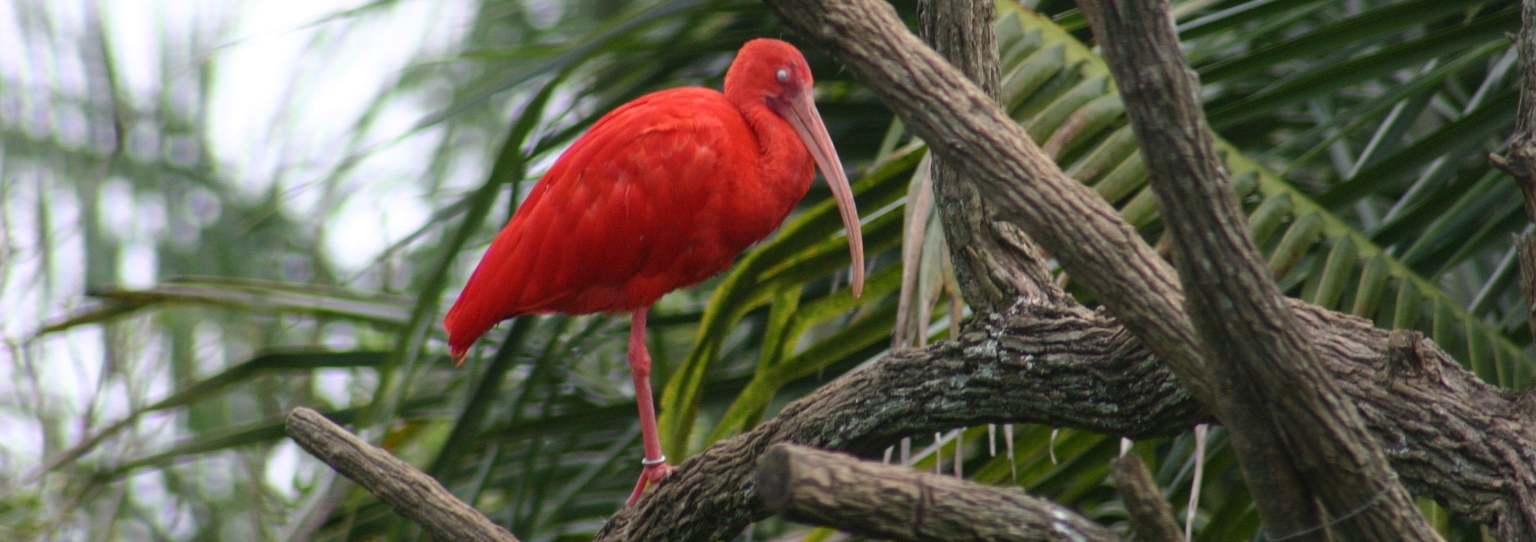Scarlet Ibis
Eudocimus ruber
Habitat: This bird is found in tropical regions, rainforests, swamps and mudflats of Central and Northern South America where it feeds on insects, fish, molluscs and crustaceans, meat, seeds, and fruits.
Info: The Scarlet Ibis is one of the most striking sights in the world of birds, flying, feeding and nesting in large groups. The unique bright-red plumage of the Scarlet Ibis intensifies as the bird grows older. As with flamingos, the brilliant red colour of the bird comes from pigments in the bodies of crustaceans on which it feeds. The long curved beak is used to probe for food in mud and shallow water, guided mostly by touch. It flies strongly with its neck extended, almost as if it were gliding. Like other birds, Scarlet Ibis fight with their beak, legs, and wings against enemies in order to protect themselves and their offspring.
Ibis nest in large breeding colonies. Both parents cooperate in building the nest — a loose pile of sticks — and in caring for the young birds. The female ibis lays two or three dull green eggs streaked with brown. After 19-23 days of incubation, the young hatchling is able to leave the nest. The young are first featherless, and then a dark brownish colour, which slowly changes to the red of their parents as they age.
Ibis have helped humans play a vital role in the overall balance of the world’s environment. Ibis have helped humans all over the world. These birds help to rid gardens and crops of insects and other small animals that are harmful to plants.
Threats: These birds are threatened by the degradation and loss of their natural habitats. Industry, clearing, grazing, burning, increased salinity, groundwater extraction and invasion by exotic plants, poisons and pesticides, hunting, all have a detrimental effect.



